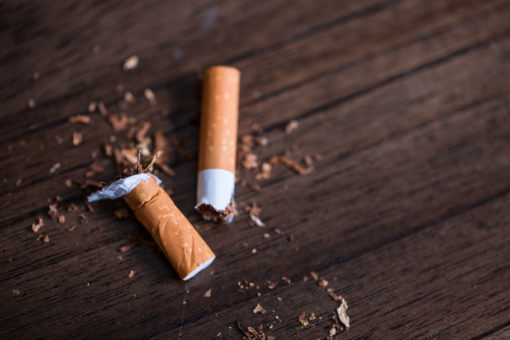May 31st is an international awareness “No Tobacco Day” as a way to educate the public about the harmful effects tobacco can have on the body, especially on the lungs, from lung infections such as pneumonia to lung cancer. Tobacco users are also endangering their environment and others through second-hand smoke. Second-hand smoke is the smoke that fills restaurants, offices, or other enclosed spaces when people burn tobacco products. There are more than 4000 chemicals in tobacco smoke, of which at least 250 are known to be harmful, and more than 50 are known to cause cancer. Second-hand smoke has a significant effect on children, the elderly, and pets, and most often, these populations are unable to leave the environment where second-hand smoke is present. Studies show that few people understand the specific health risks of tobacco use. For example, a 2009 survey in China revealed that only 38% of smokers knew that smoking causes coronary heart disease, and only 27% knew that it creates a stroke.
Taking a look at the statistics
- There are 1.1 billion tobacco users in the world. This number is expected to increase to 1.6 billion over the next two decades.
- In the United States, each pack of cigarettes sold costs society an estimated $18.05.
- One hundred million people died from tobacco-related diseases in the 20th century. Without action taken, 1 billion people could die this century from tobacco-related diseases.
- Tobacco kills up to half of its users
- Smoking kills more than 8 million people each year. More than 7 million of those deaths are the result of direct tobacco use while around 1.2 million are the result of non-smokers being exposed to second-hand smoke
- In adults, second-hand smoke causes serious cardiovascular and respiratory diseases, including coronary heart disease and lung cancer. In infants, it raises the risk of sudden infant death syndrome. In pregnant women, it causes pregnancy complications and low birth weight.
- Almost half of children regularly breathe air polluted by tobacco smoke in public places.
- Second-hand smoke causes more than 1.2 million premature deaths per year.
- 65, 000 children die each year from illnesses attributable to second-hand smoke.
Complications from tobacco use
Regardless if it is cigarettes or smokeless tobacco, tobacco can have many adverse effects on the body and is known to lead to an increased risk of stroke, heart disease, high blood pressure, oral cancer, esophageal cancer, lung cancer, blood clots, poor wound healing, erectile dysfunction, tooth and gum disease, premature aging, and pregnancy complications. Infants and children who are exposed to second-hand smoke are at an increased risk for asthma flares, infections of the ears, throat, lungs, and sinuses, lung damage, and sudden infant death syndrome.
Seeking treatment for tobacco cessation
Among smokers who are aware of the dangers of tobacco, most want to quit. Counseling and medication can more than double the chance that a smoker who tries to quit will succeed. Nicotine replacement therapy (NRT) in the form of gum or patches is a way to ease withdrawals from nicotine by supplying the body with nicotine in a step-down fashion until withdrawals are no longer present. Buproprion is a prescription that does not contain any nicotine, and it helps ease cravings and withdrawals. Varenicline, commonly known as Chantix, is non-nicotine prescription medication that helps by reducing the withdrawal symptoms and blocking the effects of nicotine from cigarettes if the use begins smoking again. When drugs are used in the presence of counseling; success rates are much higher compared to when medications are used alone.
